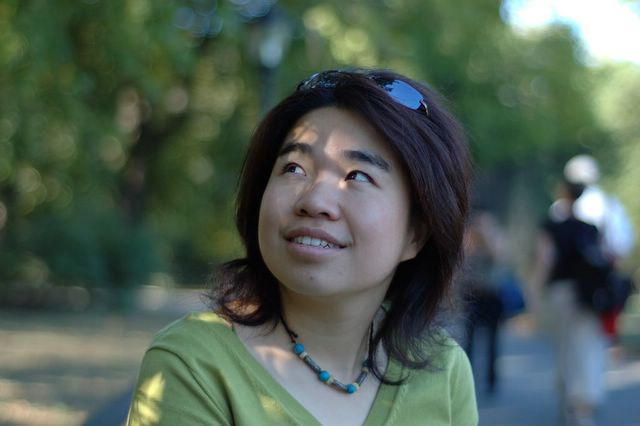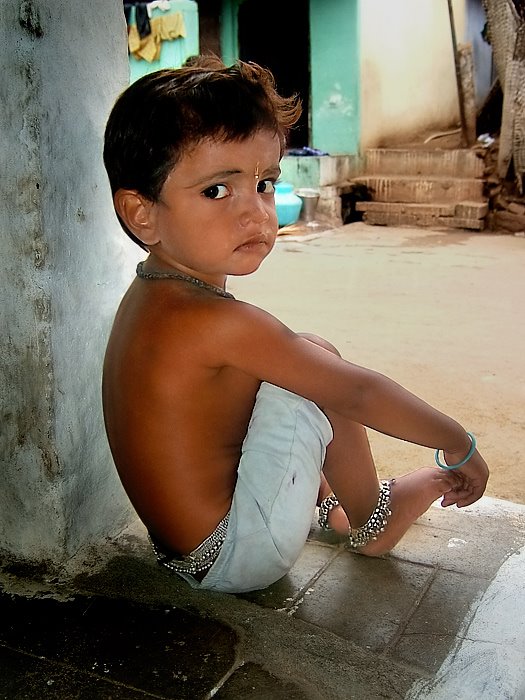
I waited my friend to come at home and found waiting was really a boring thing to do. Thus, I decided to finish my long planned trip to Cloister. It took about 20 minutes for the M4 bus to come and another 1 hour to Fort Bryan Park at the northern end of the island of Manhattan. It was an incredibly warm day in early January and the temperature rose to 56 F (22C). People felt confused and excited by the atypical weather and all came out for some outdoor fun. The streets were full of dogs, people and their kids. Two sides of the Broadway were full of stores with Spanish names which made you think you were traveling in a Latin American small town. Most shops are local groceries, dinners/delis, and many of them had signs such as “Envio Dinero” (transfer money). The immigrants from Spanish speaking countries usually rely on those organizations to send their remittance back to home, because their illegal status in US and failed to open regular bank account in American Banks. “Como Enviar Dinero via Western Union”! Believe me, your life is better of if you speak Spanish here in New York.
According to the introduction at Met’s website, “The Cloisters—described by Germain Bazin, former director of the Musée du Louvre in Paris, as "the crowning achievement of American museology"—is the branch of the Metropolitan Museum devoted to the art and architecture of medieval Europe. Located on four acres overlooking the Hudson River in northern Manhattan's Fort Tryon Park, the building incorporates elements from five medieval French cloisters—quadrangles enclosed by a roofed or vaulted passageway, or arcade—and from other monastic sites in southern France. Three of the cloisters reconstructed at the branch museum feature gardens planted according to horticultural information found in medieval treatises and poetry, garden documents and herbals, and medieval works of art, such as tapestries, stained-glass windows, and column capitals. Approximately five thousand works of art from medieval Europe, dating from about A.D. 800 with particular emphasis on the twelfth through fifteenth century, are exhibited in this unique and sympathetic context. The collection at The Cloisters is complemented by more than six thousand objects exhibited in several galleries on the first floor of the Museum's main building on Fifth Avenue. A single curatorial department oversees medieval holdings at both locations. The collection at the main building displays a somewhat broader geographical and temporal range, while the focus at The Cloisters is on the Romanesque and Gothic periods. Renowned for its architectural sculpture, The Cloisters also rewards visitors with exquisite illuminated manuscripts, stained glass, metalwork, enamels, ivories, and tapestries”.
The building of the Cloister itself has a transcendent power. The five embedded churches take one going through the journey of thousand of miles in a tour of couple hours, meanwhile it pertains the authenticity of religious feeling these architect intended to communicate. I like the way in which the audio tour was put up. The explanation usually starts with a piece of mediaeval music related to the region or specific religious destination of the church, and the music smoothes your mind and prepare you to enter into an rather ancient time. With the rhythm of the time, the narrator (usually the curator of this specific art work or period) outlines the function of the part of this architectural structure, such as a chapel, and then goes to the details about the life of monks and the religious meaning of their particular way of life. The art works we observe today are relics of people living in mediaeval time. In the sense, the audio tour intends to give you a sense of life then to help you to understand the historical and social background of the work.
In my recollection, the “Middle Ages” is a long and dark time period of human being. Nevertheless, a closer observation reveals a cultural cultivation of art and humanity. This period “between ancient and modern times in Western civilization, known as the Middle Ages, extends from the fourth to the early sixteenth century—that is, roughly from the Fall of Rome to the beginning of the Renaissance in Northern Europe”. The time frame includes the pre-Christian antecedents in Western Europe through the early Christian, Byzantine, Romanesque, and Gothic periods. The Cloisters intends to put all its collections into their historical environment and thus help the visitors to perceive and understand the art works as they were presented in history. Usually the developments of the architectural and painting or sculptural styles are intertwined together, rather than standing alone. From the functionalist’s point of view, many of the art works come to serve the needs of the architecture where they were presented. For instance, from the retreat of the Romanesque church to the rise of the Gothic church, the Stained Glass became a favorite form of art expression because the building itself asked for more light into the enormous space.

My favorite works are the famous seven tapestries depicting "The Hunt of the Unicorn” (ca. 1495–1505, South Netherlandish, Wool warp, wool, silk, silver, and gilt wefts; 12 ft. 1 in. x 14 ft. (368 x 251.5 cm), The Metropolitan Museum of Art, New York, Gift of John D. Rockefeller Jr., 1937 (37.80.3)). Met Museum has dedicated a comprehensive website to this work (http://www.metmuseum.org/explore/Unicorn/unicorn_inside.htm). As early as the seventeenth century, the Unicorn Tapestries were documented as having been displayed as a group. Surely they were collected and exhibited together because together they illustrate the pursuit of the elusive unicorn so completely and in such astonishing detail, despite the likelihood that the seven individual hangings may come from two or more sets of tapestries. In Middle Ages, Unicorn represents charity and innocence and the meaning of this group of work is not totally clear even today. The story starts as the Unicorn uses its corn to purify a poisoned spring in the forest. Then the hunters approach and it runs and jumps across the river. It fights the dogs and hunters with its unicorn, but eventually is defeated and killed. In the last piece, the dead unicorn is presented to a young noble couple. In my eyes, the story tells the falling of the human innocence by the almighty external power. The unavailable fate of ruin only becomes trivial in the celebration of the fools who killed the unicorn.

The garden of the Cloister is unearthly beautiful. Overlooking the Hudson River from above, the garden is a fine collection of flowers and plants which are typically seen in churches of the mediaeval time, as you were visiting southern France back in time. The declining sunshine of the day makes the garden all the more amicable, because the shadows of the cloister begin to draw beautiful lines in the walls. The floating shadows moves in the wall, reminding you the different prayers in the Book of the Hours. I sat in the bench in Cloister for half an hour, just tried to relax, enjoyed watching the clouds and the shadow of the cloister columns. The overwhelming impression of the building and its splendid collections now turn into a sense of happiness, of being at the moment without pain. What do we ask from religion? For me, it is this moment of peace in mind.


没有评论:
发表评论